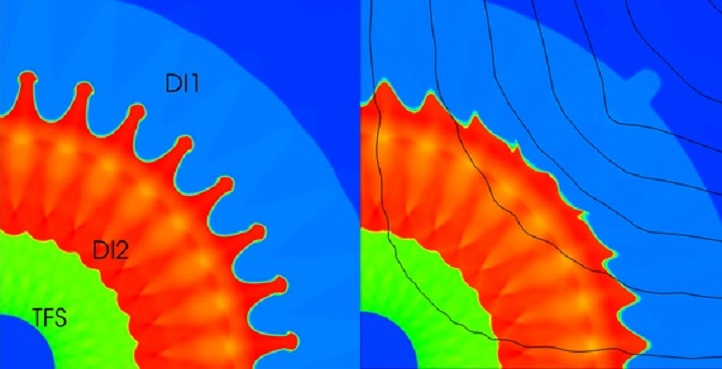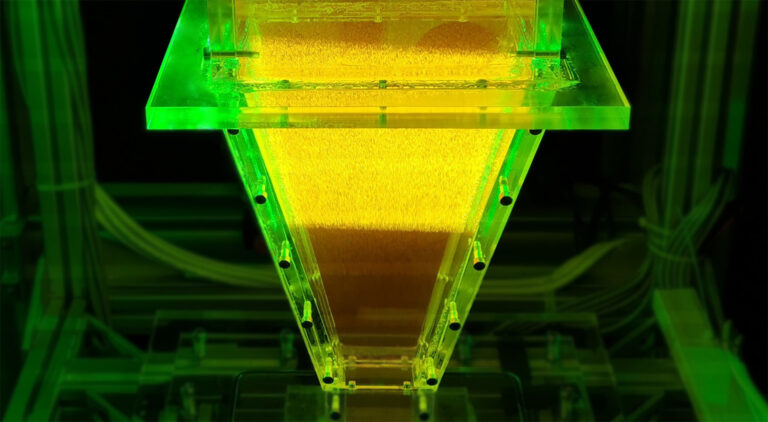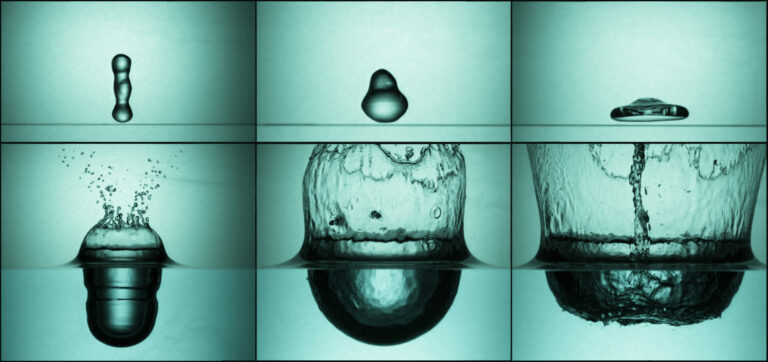Mechanical Engineering
Attempting to tame plasmas in fusion
A numerical study reveals how to reduce instabilities in the complex flow of plasma in converging geometry of particles in fusion reactions.

Nuclear fusion, the release of energy when light atomic nuclei merge, is touted as a carbon-free solution to global energy requirements. One potential route to nuclear fusion is inertial confinement. Now a KAUST-led team has modeled the complex flow of plasma that could occur in such a fusion reactor.
Inertial confinement involves firing multiple powerful laser beams at a hydrogen pellet from many directions, which causes an implosion shockwave that heats the target to temperatures high enough to create a plasma—a cloud of charged particles—and initiate fusion. The pellet should implode symmetrically, but slight differences in the power of the laser beams creates plasma of differing temperature and density, which flow differently and create instabilities in the fuel.
Ph.D. student Yuan Li and his supervisor Ravi Samtaney from KAUST’s Mechanical Engineering program and Vincent Wheatley from The University of Queensland, Australia, used a fluid model of plasma dynamics to investigate the evolution of a particular type of instability called the Richtmyer–Meshkov instability (RMI).
The RMI starts as small perturbations between regions of impulsively accelerating fluids of high and low density. The perturbations initially grow linearly with time; this is followed by a nonlinear regime with the formation of bubbles of the light fluid penetrating the heavy one and with spikes of the heavy fluid into the light one. Eventually this evolves into turbulent mixing, which is detrimental to achieving the hot spot at the center of the implosion.
Li, Samtaney and Wheatley numerically investigated the RMI in the case of a converging cylindrical shock interacting with two interfaces that separated fluids of three densities. Previous research indicated that applying a magnetic field decreases the temperature required for ignition and reduces instability. The team studied changes in the flow field under the influence of a magnetic field shaped like a saddle; a topology previously identified as the most effective.
By simulating this system with different ratios of densities between the three fluids and various magnetic-field intensities, the team confirmed that the saddle-shaped magnetic field could indeed reduce the instability. However, they showed that the extent of the suppression varies on the interface: whether it was light to heavy or heavy to light. This in turn leads to a nonsymmetric growth of the perturbations. The degree of this asymmetry increases with increasing strength of the magnetic field.
“The saddle magnetic field suppresses RMI; however, it also breaks the flow symmetry,” explains Samtaney. “Symmetry is very important for the implosion to achieve high temperature and density.”
“We next hope to use a more advanced mathematical model of shock-driven instabilities in inertial confinement fusion that treats ions and electrons as separate fluids,” says Samtaney.
References
- Li, Y., Samtaney, R. & Wheatley, V. The Richtmyer-Meshkov instability of a double-layer interface in convergent geometry with magnetohydrodynamic. Matter and Radiation at Extremes 3, 207–218 (2018).| article
You might also like

Mechanical Engineering
Innovative strain sensor design enables extreme sensitivity

Mechanical Engineering
Turbulent flow shows surprise patterns that could help boost efficiency

Mechanical Engineering
Machine learning model identifies gas molecules

Mechanical Engineering
Making a splash: unraveling the impact of large water droplets

Mechanical Engineering
Sour gas has sweet potential for hydrogen production

Mechanical Engineering
Dancing droplets’ new spin on water harvesting

Mechanical Engineering
Underwater air pockets smooth out the bumps

Chemistry




